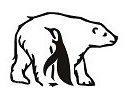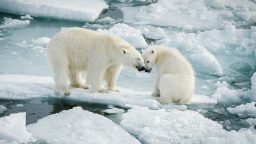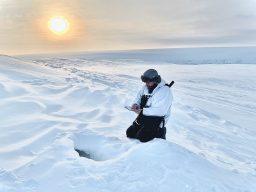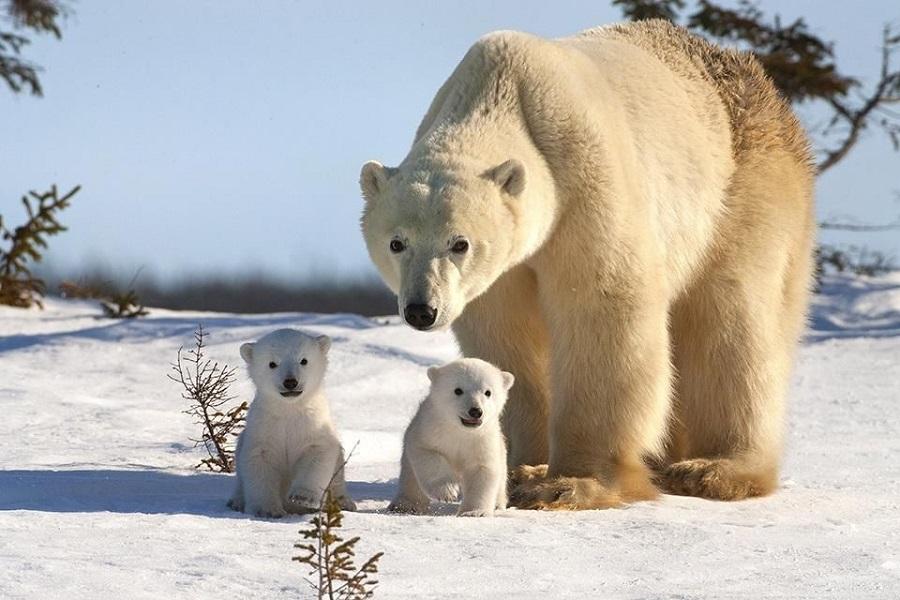
Happy Mom
The den is the home of the polar bear
The polar bear feels comfortable in the unfavorable conditions of the far north, has managed to cope with the gloomy bad weather of the polar night, with a limited choice of food resources, and with constant cold. And he couldn’t resist the man who had declared an unrestrained hunt for him. But it is not so easy to restore the population size — there are too many difficulties in the life of this beast.
The rhythms of life in the Arctic are different from any other place — the polar night reigns here for six months. During this period, the bears give birth to babies and feed them with milk. That’s why they need dens — unlike brown relatives, polar bears do not hibernate.
Males can sometimes lie down in a temporary den to wait out a blizzard, and sometimes for a fairly long time up to a month, but then invariably go on to wander through snow-covered fields. Females spend much more time “at home”, but they also do not have time to sleep — offspring require attention.
The bear begins to look for a place for a future “apartment” ahead of time. Although in general she tends to return to the place where she has already successfully given birth to cubs, the final choice of location is primarily influenced by weather conditions. The level of snow cover is especially important — the more snow, the better and safer it is.
When it becomes enough, the expectant mother digs out a den and gives birth around the New Year. After that, she stays inside for about three months, feeding the cubs and waiting for them to grow up. From time to time, she expands the “living space”, creating new “rooms”.
— Usually all dens are single—chamber, but there can be two or three cameras, – says Ivan Mizin, Deputy Director for Science of the Russian Arctic National Park. — Over time, dirt accumulates in the snow chamber — wool, fat. By spring, the cubs can become more active in their snow-covered shelter, they need more space.
When babies grow to a certain size, it’s time to go outside. The second sign that it’s time to leave the den is hunger, because the bear has not eaten for almost five months, while feeding the cubs. Perhaps at this moment the hormonal background and the general condition of the female change.
Deciding that it’s time to “bring the children out”, the bear punches an exit outside and looks around for a day or two. Then he goes out and brings out the cubs — for a short time to begin with. For a week or two, the family will not move away from the den, the mother monitors the condition of the cubs, determining whether they are ready for long-distance crossings in open space.
— During this period, they should not be disturbed in any case, — Ivan Mizin notes. — All over the world — here, in Canada, and in Svalbard — visiting dens at this time is strictly prohibited. If the bear becomes alarmed for some reason, she may abandon or even kill the cubs, deciding that she will not be able to raise them.
The female sensitively monitors all external factors that can negatively affect the fate of her offspring. Even seemingly safe reindeer can bring trouble, which will disrupt the usual routine with noise. Before finally leaving the den, the bear must make sure that everything is calm and there is food nearby — as a rule, these are the cubs of the ringed seal, which gives birth to squirrels around the same time.
In any danger, the cubs hide under their mother, who is strong enough to ward off any opponent. The only one she can’t handle so easily is a male of the same species as her. Researchers have often observed cases of cannibalism, when polar bears killed cubs, and not necessarily because they were hungry.
And here we have a dining room
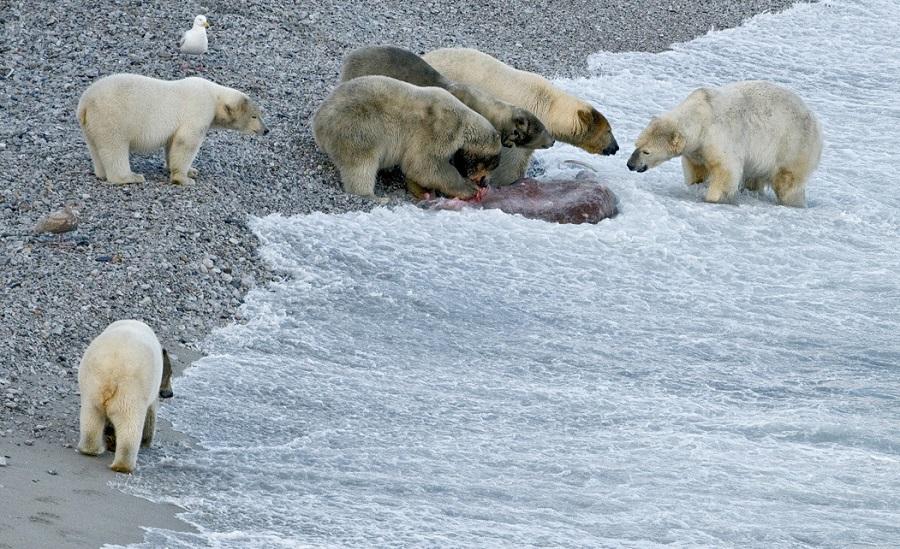
The “Table Truce”. Photo: Sergey Gorshkov
It’s just that the mother busy with children is not up to the male, and the only way for the male to draw attention to himself and force him to engage in reproduction is to destroy the babies. At the same time, in the spring and summer period, when there is relatively much food, bears are generally quite tolerant of each other. The need to forage in the unstable conditions of the Arctic has taught them to avoid unnecessary conflicts.
“A few years ago, an absolutely wonderful picture was taken on Wrangel Island,” Ivan Mizin recalls. — Almost 200 animals gathered near the carcass of the bowhead whale — the entire slope around was literally dotted with polar bears of different ages and genders. Of course, in such situations, they take turns eating, observing a certain hierarchy, but at the same time they behave quite peacefully.
— If the young individuals found the prey first, and then a larger male came, he will drive them away for a while, – Alexander Gruzdev reveals the details. — But soon they will come back and eat together. My colleagues once watched as one bear got a walrus, and while he was eating it, others pulled up.
— At first, the miner drove them away, but soon it became clear: while he was dealing with some, the next ones came for fresh meat, and while you fight with all, there will be no food left. So soon everyone was eating quite amicably together. Bears are quite philosophical about this. Females try to approach separately — they are worried about the cubs, so they tend to avoid too close proximity to large males.
Gradually, the mothers teach the cubs all the necessary skills: to distinguish the types of prey, to figure out when it is better to hunt whom. In the spring, they train to dig up the lairs of seals, later they attack seals from the ice floe. The latter requires remarkable patience: you have to wait a long time at the seal holes in the hope that the victim decides to come up, and then have time to hit with his paw and pull out the trophy. Some of the skills are innate, for example, hitting with both paws when digging up a snow-covered den of a seal, and the female shows some techniques to the cubs herself.
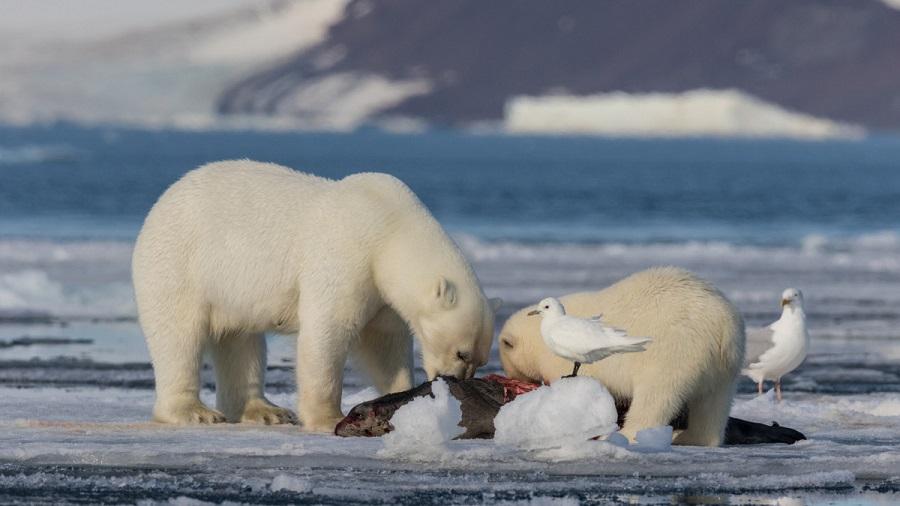
A bear and a cub have lunch with a seal. Photo: Nikolai Gernet
— Hunting from an ice floe requires dexterity, — says Alexander Gruzdev. — You can hardly take the same seal in the water, it swims too fast — it moves with great speed, it can quickly change direction to the opposite. Seals are used to fishing, and therefore excellent swimmers. Sometimes the bear manages to catch them at the moment of jumping into the water or grab them before they go there, and then a feast awaits him.
— It happens that polar bears hunt small cetaceans, such as belugas, — adds Ivan Mizin. — They often come to the shore for fish, where a predator can ambush them on rocks and rocks. Then the bear jumps and may well grab a small beluga whale swimming by, most often a cub.
The man and the Bear
Usually wild animals try to avoid human society, but animals living in the conditions of the north have slightly different priorities. Their hunger often turns out to be stronger than the instinct of self-preservation, and then polar bears come to the villages to feed themselves in landfills. Here they become more aggressive than in a normal environment, and a person can be perceived as an opponent who needs to be eliminated so as not to interfere with passing, for example, to a porridge with meat thrown in the trash.
Having switched in the summer from the usual food, which you need to go along the edge of the ice, to less high-calorie food at bird markets, bears are gradually changing. Scientists have noticed that in the low-fat western regions of the Arctic, animals are smaller in size than in more prosperous areas, where they have much more food throughout the year.
By constantly observing the animals and figuring out the peculiarities of their behavior, scientists have developed a conservation Strategy for the species. It is not so easy to keep track of bears – although they are territorial animals, the area of their “lands” can range from hundreds of kilometers to hundreds of thousands, and this is due precisely to the need to go beyond the edge of the ice.
— Sometimes you have to drive away bears using their own methods — they prefer not to fight, but to find out who will outshoot whom, — says Alexander Gruzdev. — Once, in front of me, tourists behaved carelessly and attracted the unwanted attention of an animal. I had to take urgent measures, which is not so easy — you need to hiss like a fire extinguisher, otherwise it will not make an impression on the bear. Fortunately, everything worked out that time.
Among other things, the polar bear serves as a vivid indicator of the state of the environment in the Arctic. After all, it is the polar bear that is the original owner of the Arctic, and he has the right to live there as he is used to.
By Olga Ladygina
More amazing facts about the Arctic can be read here.
